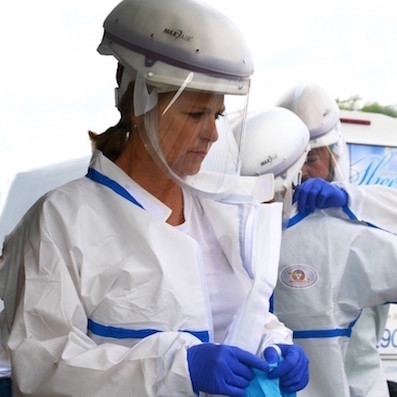 Cleanzine: your weekly cleaning and hygiene industry newsletter 26th June 2025 Issue no. 1168
Cleanzine: your weekly cleaning and hygiene industry newsletter 26th June 2025 Issue no. 1168
Your industry news - first
The original and best - for over 20 years!
We strongly recommend viewing Cleanzine full size in your web browser. Click our masthead above to visit our website version.
Global Biorisk Advisory Council responds to updated CDC guidelines for cleaning and disinfecting against COVID-19
 The Global Biorisk Advisory Council(tm) (GBAC), a Division of ISSA, today released clarification around revised guidelines from the U.S. Centers for Disease Control and Prevention (CDC) related to cleaning and disinfecting for SARS-CoV-2, the virus that causes COVID-19.
The Global Biorisk Advisory Council(tm) (GBAC), a Division of ISSA, today released clarification around revised guidelines from the U.S. Centers for Disease Control and Prevention (CDC) related to cleaning and disinfecting for SARS-CoV-2, the virus that causes COVID-19.
The CDC's latest guidance noted that "cleaning with products containing soap or detergent reduces germs on surfaces by removing contaminants and may also weaken or damage some of the virus particles, which decreases risk of infection from surfaces." ISSA and GBAC wish to emphasise the critical importance that cleaning and disinfecting surfaces must not only reduce exposure to COVID-19, but to other pathogens as well.
"While there are still many uncertainties surrounding COVID-19, it is clear that facilities can better prepare for, respond to, and recover from outbreaks when they have a comprehensive program that starts with a risk assessment" said GBAC Executive Director Patricia Olinger.
"There are many layers to this issue, but as authoritative leaders within the space, we feel it's important to clarify that with the current pandemic, in addition to indoor air quality needs, cleaning professionals should continue their enhanced efforts in cleaning and disinfecting public facilities with added focus on high touch points. When used correctly by trained professionals, proven products and equipment are very effective against SARS-CoV-2 as well as other viruses and bacteria."
The use of products approved by the U.S. Environmental Protection Agency (EPA) and included on the EPA's List N is preferable, as it ensures cleaning professionals are applying expert-reviewed formulations that have been approved for use against SARS-CoV-2. Additionally, cleaning for health is most effective at mitigating the spread of illnesses when it is a multi-step approach that involves first cleaning surfaces to remove or reduce soil loads and then disinfecting to kill bacteria, fungi, and inactivate viruses.
The CDC also stated that, "in most cases, fogging, fumigation, and wide-area or electrostatic spraying is not recommended as a primary method of surface disinfection and has several safety risks to consider." While surface disinfection equipment is not necessary for every facility, ISSA and GBAC support the use of sprayers with the proper training, as these tools can be incredibly useful for high-traffic facilities and those with occupants with an increased risk of illness. When using chemicals and disinfection equipment, it is important to read the label and use products correctly to prevent unnecessary overuse and exposure.
"There is a continuum of risk during the pandemic as new SARS-CoV-2 variants emerge, and beyond it due to the fact that illnesses like influenza, norovirus, and Methicillin-resistant Staphylococcus aureus (MRSA) can impact public health," said ISSA Executive Director John Barrett. "When combined, cleaning and disinfecting of surfaces, air quality controls, the use of face masks, hand hygiene, and other measures can greatly reduce the risk of infection spread and give facility occupants and guests greater peace of mind that organisations are prioritising their health and safety."
For more information on proper facilities cleaning and disinfecting now and post pandemic, visit www.issa.com
15th April 2021







